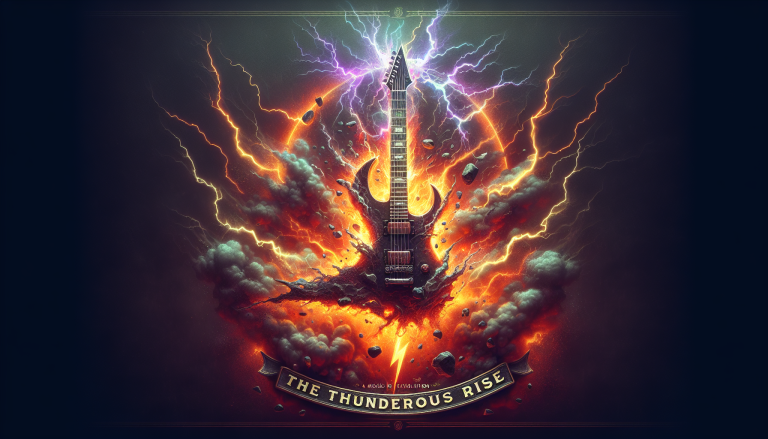The Roots and Rise of Heavy Metal Music
If rock music is the roaring engine of the musical highway, then heavy metal music is the thunderous roar that shakes the earth beneath your feet. Emerging from the roots of hard rock and blues-rock in the late 1960s and early 1970s, heavy metal carved out a unique sonic and cultural space, a realm where volume, intensity, and raw emotion reign supreme. This is not just music; it’s a cathartic force, a headlong plunge into sonic power that challenged conventions and reshaped the landscape of American music and beyond.
Heavy metal music’s origins can be traced back to the industrial cities of Britain, but its deep infusion into American music scenes added layers of grit and individualism that helped forge a global legacy. The genre was born amidst a backdrop of social upheaval, economic strife, and a younger generation yearning for something louder, heavier, and more rebellious than before. Bands began to amplify the bluesy riffs of rock to new heights, layering distortion, pounding rhythms, and dramatic vocals into something both primal and sophisticated.
Defining the Genre: Thunderous, Theatric, and Unapologetic

At its essence, heavy metal music is defined by its thick, powerful guitar riffs, aggressive drumming, and commanding vocals that range from guttural growls to operatic highs. The electric guitar, often detuned or pushed through high-gain amplifiers, creates a wall of sound that envelops listeners and transports them to another realm. Songs frequently explore themes of mythology, fantasy, existential angst, and societal critique, imbuing metal with an almost literary quality.
Heavy metal isn’t merely about volume; it cultivates atmosphere and mood, whether ominous, triumphant, or merciless. The genre has birthed countless subgenres—from the doom-laden tones of Black Sabbath to the speed-fueled blast beats of thrash metal, and the symphonic grandeur of progressive metal—each adding distinct textures while maintaining the genre’s core intensity.
In an era where commercial appeal often pushes artists toward conformity, heavy metal music persists as a bastion of individuality and rebellion. It invites its audience to embrace the raw edges of emotion and artistry, refusing to dilute passion for marketability.
Architects of the Sound: Pioneers and Legends
No discussion of heavy metal’s lineage would be complete without paying homage to the architects who laid its foundation and those who expanded its boundaries. Black Sabbath, arguably the progenitors of true heavy metal, ignited the genre with their doom-laden riffs and eerie atmospherics on tracks like “Iron Man” and “War Pigs.” Their music was a dark fairy tale wrapped in layers of distortion and heavy groove, a stark counterpoint to the peace-and-love ethos of the 1960s.
Across the Atlantic in America, bands such as Metallica and Slayer propelled heavy metal into new territories during the 1980s with their speed and aggression, creating what would become thrash metal—a faster, harder-edged form with a razor-sharp political and social conscience. Metallica’s album *Master of Puppets* set a new bar for songwriting and complexity, while Slayer’s *Reign in Blood* remains a ferocious high-water mark in metal’s extreme intensity.
Further down the timeline, groups like Pantera introduced groove-based heavy metal in the ’90s, combining ferocity with rhythmic swagger, shaping the sound of modern American metal. Meanwhile, legends like Iron Maiden, though British, influenced American scenes deeply with their epic storytelling and dual guitar harmonies, proving heavy metal’s global reach intertwined with American music in profound ways.
Iconic Tracks and Albums that Set the World Alight
Certain albums and songs stand as pillars within heavy metal’s sprawling cathedral, each representing a milestone in the genre’s evolution. Black Sabbath’s self-titled debut album (1970) shockingly opened with a chilling riff that would define doom metal forever. “Paranoid” followed as an anthem—a stripped-down, relentless track that encapsulated the raw power and accessibility of metal.
Metallica’s *Master of Puppets* (1986) is often cited as the zenith of thrash metal; the album’s meticulous craftsmanship and lyrical depth challenged metal’s reputation as mere noise, adding profound narratives about control and addiction. Opening track “Battery” explodes with speed and precision, embodying the genre’s ferocity.
Slayer’s *Reign in Blood* (1986) is a blistering, 28-minute whirlwind of sonic aggression. From “Angel of Death” to “Raining Blood,” the album set new standards for intensity that still reverberate across metal scenes worldwide.
In more recent decades, albums like Mastodon’s *Crack the Skye* (2009) pushed the envelope with progressive and conceptual elements, highlighting the genre’s artistic maturity without losing its edge.
Heavy Metal’s Enduring Legacy and Influence
What is perhaps most fascinating about heavy metal music is its defiant resilience and adaptability. Decades after its explosive beginnings, it remains a vital and influential force, spawning subcultures worldwide—from leather-clad metalheads at festivals to avant-garde artists blending metal with electronic or folk elements.
Heavy metal’s ethos of defiance, complexity, and emotional transparency continues to inspire countless musicians across genres. It opened doors for other niche American music styles, encouraging bold experimentation and authentic storytelling. Bands in the realm of Americana music—an entirely different but equally rich thread of American music—share a kindred spirit in celebrating heritage and raw expression, and heavy metal’s boldness complements those roots with its own theatrical grandeur.
The genre has also carved a cultural space as a form of identity and community. The bonds forged in mosh pits, the camaraderie at concerts, the shared symbols and language—all speak to heavy metal’s profound social impact beyond music alone.
Heavy metal music embodies a timeless energy, a voice for the marginalized and a rallying cry to confront life’s darkness head-on with honesty and power. As American music continues to evolve, metal’s thunderous legacy remains an indomitable force—louder, prouder, and more enthralling than ever.